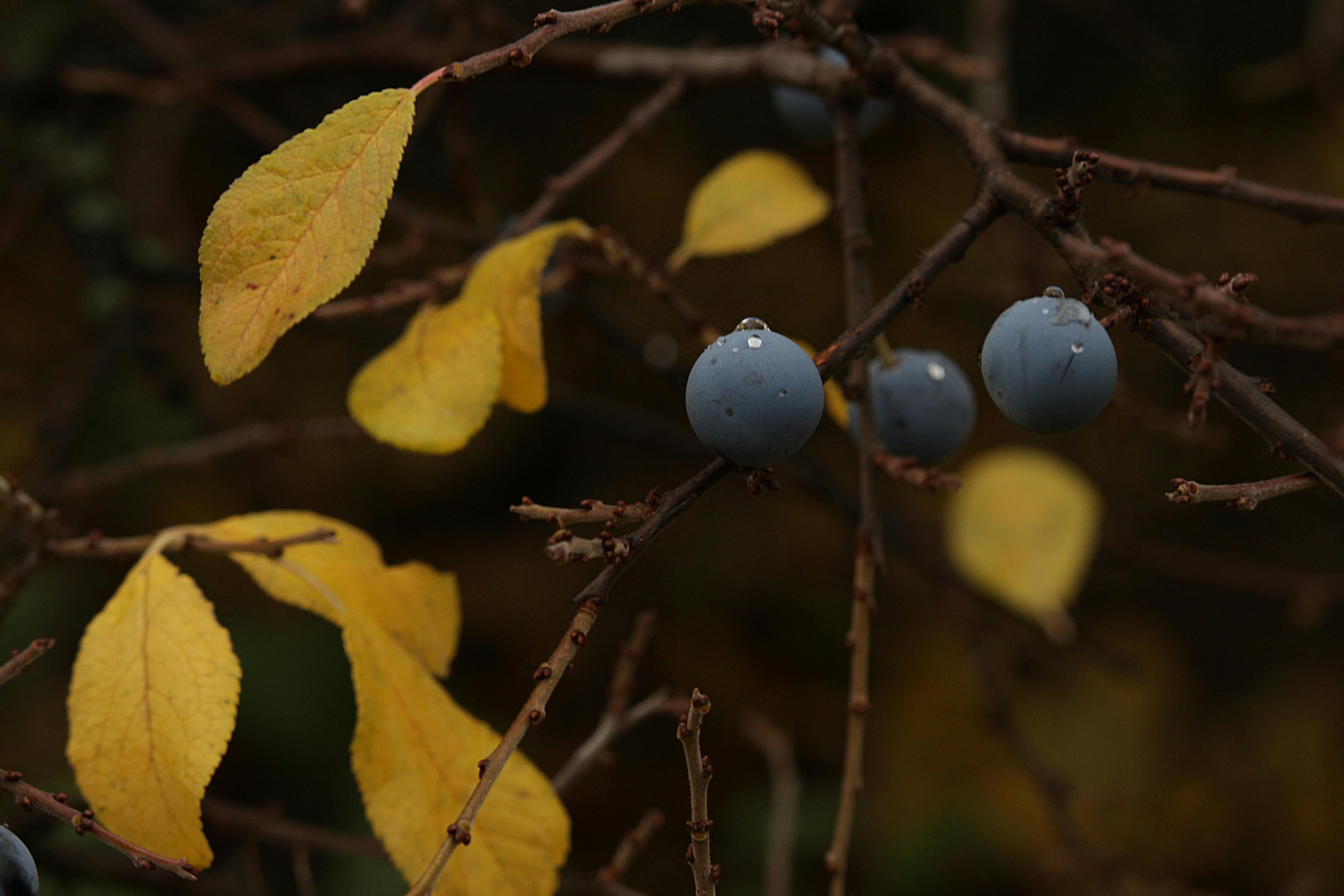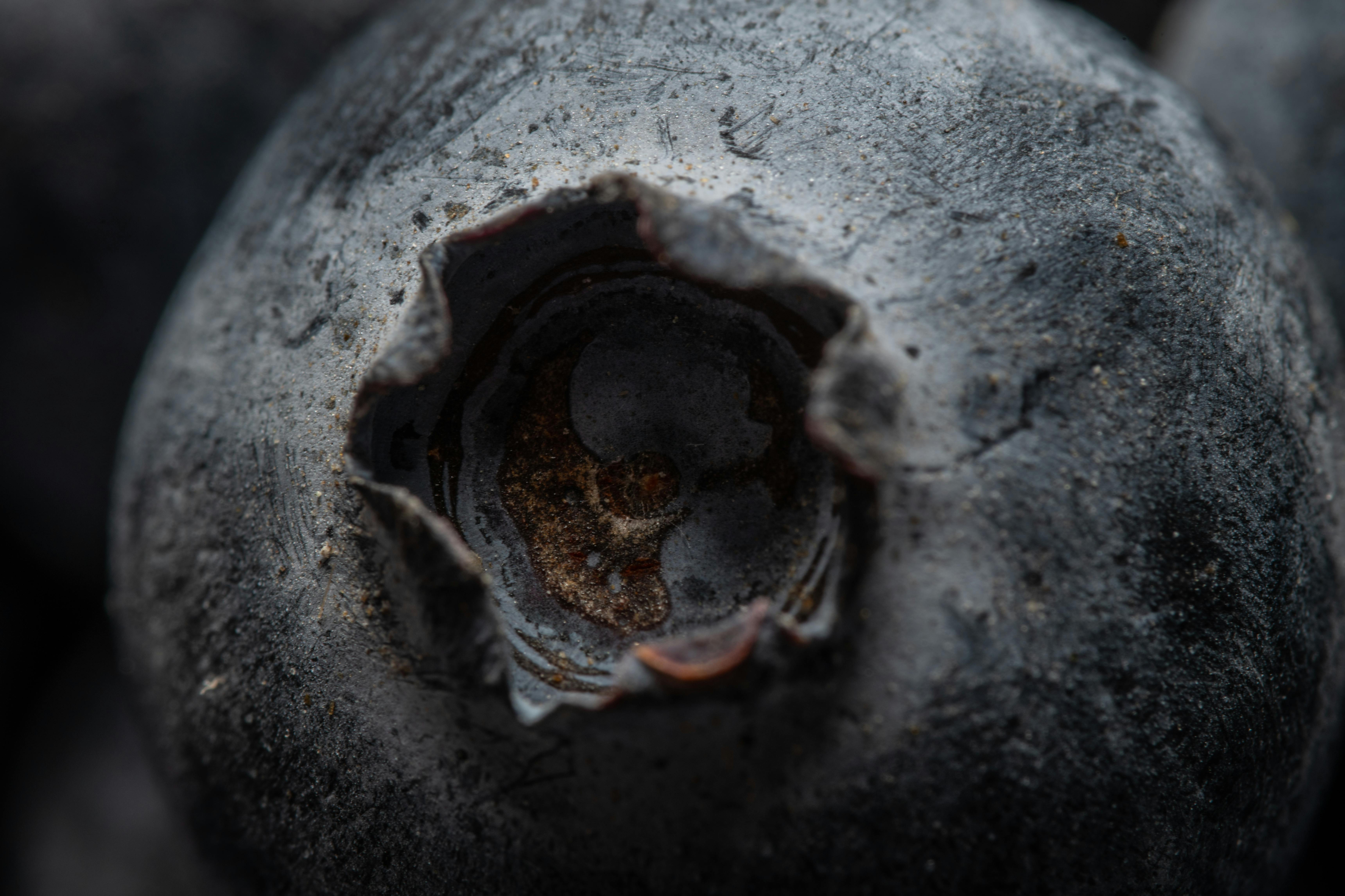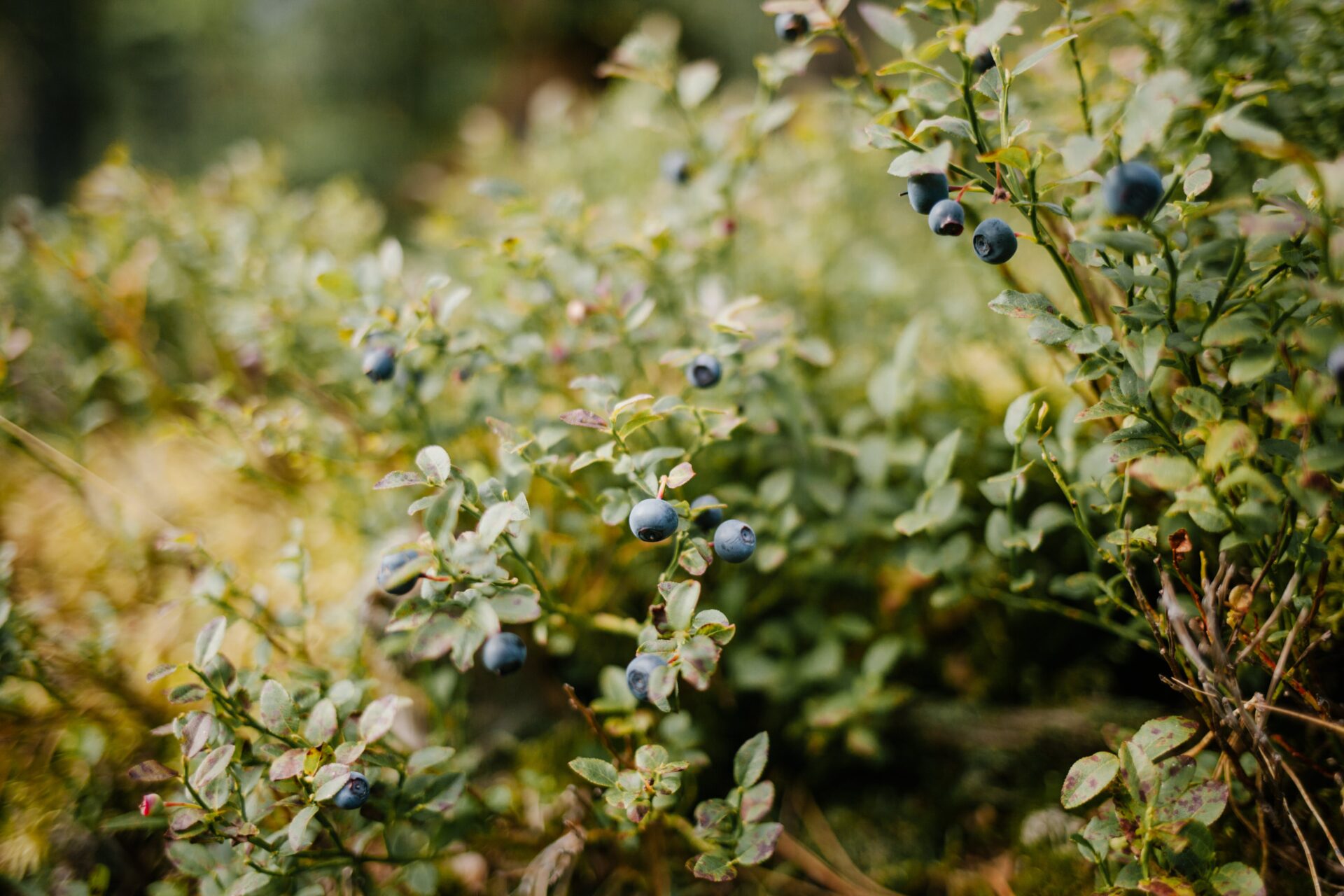Have you ever noticed that your blueberry bush isn’t performing as well as it used to? Do the leaves look yellow and wilted? Have the berries stopped growing or ripening? If you’re having trouble with your blueberry bush, there could be a variety of factors at play. In this article, we’ll explore what can be wrong with a blueberry bush and how to diagnose the problem.Blueberry bushes can become unhealthy due to a variety of factors, including insufficient watering, inadequate sunlight, pests and diseases, and poor soil conditions. If the soil pH is too high or too low, the blueberry bush may struggle to absorb essential nutrients. Poor drainage can lead to root rot and other fungal issues. Additionally, overwatering or not providing enough water can both lead to health problems for the blueberry bush. Finally, infestations of pests and diseases such as aphids, mites, and blight can cause serious damage if left unchecked.
Identifying Nutritional Deficiencies in Blueberry Bushes
Blueberry bushes are a popular choice for home gardens and can provide an abundance of delicious fruit. However, in order to get the best from your blueberries, it’s important to ensure that they are receiving all the nutrients they need. Nutrient deficiencies can lead to poor growth and poor yields, so it’s important to be vigilant in detecting them early.
The most common nutrient deficiencies in blueberry bushes are related to pH levels, nitrogen, phosphorous, potassium and magnesium. Low pH levels can cause a deficiency in magnesium and iron, while high pH levels can inhibit phosphorus uptake. It’s important to test your soil for its pH level before planting blueberries or adding any fertilizers.
Nitrogen deficiency is one of the most common problems with blueberries, as it affects both foliage and fruit production. Symptoms of nitrogen deficiency include yellowing of foliage and reduced vigor. If left untreated, nitrogen deficiencies can lead to reduced yields of smaller berries with less flavor.
Phosphorus deficiencies can also cause stunted growth and yellowing of leaves, though this is often accompanied by other symptoms such as purpling of stems and leaf veins. If left untreated, phosphorus deficiencies can lead to lower yields and poorer quality berries due to their smaller size and lack of flavor development.
Potassium deficiencies usually manifest as yellowing or wilting of leaves around the edges or tips of the plant. Potassium helps regulate water movement within the plant so a lack of it will result in wilting or yellowing leaves due to dehydration stress.
Magnesium deficiencies appear as yellowing between veins on older leaves towards the bottom of the bush while new growth remains green. Magnesium is essential for photosynthesis so a deficiency will limit the amount of energy that your plant can produce from sunlight, resulting in slower growth and reduced fruiting potential.
By being aware of these nutrient deficiencies you will be able to recognize any signs early on before they become more severe or have an irreversible impact on your plants health or yield potential. Regular soil testing is recommended for all gardeners growing blueberries; this way you will always know what nutrients are available for your plants at any given time so you can adjust your fertilization program accordingly if necessary.
Diseases
Blueberry bushes are susceptible to a variety of diseases that can cause damage and reduce yields. The most common diseases affecting blueberry plants are anthracnose, Phomopsis canker, twig blight, and mummy berry. Proper identification of the disease is necessary to treat it properly. Symptoms of these diseases include discolored leaves, stem dieback, and the appearance of lesions or spots on the berries.
Anthracnose is caused by a fungal pathogen and results in lesions on the stem and fruit which can cause considerable crop losses. This disease can be prevented by applying fungicides during the spring flowering period.
Phomopsis Canker is caused by a fungus that causes stem lesions which eventually cause dieback. Fungicides should be applied in late spring or early summer to prevent this disease from developing further.
Twig Blight is caused by a fungus that infects young shoots and causes them to wilt and die back. Fungicides should be applied early in the season to prevent this disease from spreading further.
Mummy Berry is caused by a fungus that infects berries causing them to become mummified or shriveled up and turn black. Fungicides should be applied at the beginning of bloom to prevent this disease from developing further.
Pests
Blueberry bushes can also suffer from various pests which can reduce yields if not treated properly. The most common pests affecting blueberry plants are spider mites, earwigs, thrips, aphids, sawfly larvae, leafhoppers, Japanese beetles, and leafrollers. Proper identification of the pest is necessary to treat it properly. Symptoms of these pests include discolored leaves, wilting or discolored stems or branches, webbing on foliage or fruit clusters, small holes in foliage or fruit clusters, misshapen fruit clusters or berries with tunnels in them due to feeding damage from larvae inside them.
Spider mites are tiny insects that feed on plant sap causing discoloration of foliage and wilting of new shoots and buds. They can be controlled by spraying insecticidal soap or horticultural oil on affected areas as soon as infestation is noticed.
Earwigs are small insects with large pincers at the end of their bodies which feed on tender foliage resulting in holes in leaves and flower buds being eaten away leaving only stems behind. They can be controlled by trapping them using shallow containers filled with vegetable oil baited with cornmeal or molasses placed near affected plants at night when they come out foraging for food.
Thrips are small slender insects that feed on plant sap causing silvery streaks on foliage as well as distorted growth due to their feeding habits resulting in deformed flowers and fruits if not treated promptly using insecticidal soap sprays targeting affected areas only when they appear.
Sawfly larvae resemble caterpillars but are actually small green larvae that feed on foliage resulting in defoliation if left untreated for too long; they can be controlled using parasitic wasps released near affected plants as soon as infestation is noticed.
Aphids are tiny soft-bodied insects that suck plant sap from tender growth resulting in distorted shoots if left untreated; they can be controlled using insecticidal soap sprays targeting affected areas only when infestation is noticed.
Leafhoppers are tiny green insects that suck plant sap from tender growth resulting in yellowing leaves if left untreated; they can be controlled using predatory mites released near affected plants as soon as infestation is noticed.
Japanese Beetles are large metallic-green beetles that eat away at foliage resulting in defoliation if left untreated; they can be controlled using traps baited with pheromones placed near affected plants during active periods when adults appear.
Leafrollers are small caterpillars that roll up into tight balls while feeding on foliage resulting in distorted growth due to their feeding habits; they can be controlled using Bacillus thuringiensis sprays targeting affected areas only when infestation appears.
Planting Blueberry Bushes
Planting blueberry bushes is a great way to add beauty and flavor to your landscape. Blueberries are easy to grow and will produce an abundant harvest with the proper care. When selecting a site for planting blueberry bushes, choose an area with full sun and well-drained soil. Planting in raised beds is also an option, as it will help keep the soil moist and evenly drained. Dig a hole slightly larger than the root ball of the bush and fill it with compost or organic matter. Place the bush in the hole so that it is even with the surface of the ground, then backfill with soil. Water thoroughly after planting to settle the soil around the roots.
Caring for Blueberry Bushes
Once planted, blueberry bushes should be watered regularly throughout their growing season. During hot weather, they may need supplemental irrigation every few days. Mulching around your plants will help keep moisture in and help prevent weeds from taking over your garden. Prune annually to remove dead or diseased branches and encourage new growth. Fertilize your blueberry bushes twice a year (in spring and early summer) using an acid-based fertilizer specifically made for blueberries. Covering them during cold winter months can also help protect them from extreme temperatures.
Harvesting Blueberries
You can begin harvesting blueberries when they reach a deep purple color (or whatever color variety you have chosen). Gently tug on each berry; if it doesn’t come off easily, it’s not ready yet! Be sure to pick them regularly during harvest season so that you don’t miss out on any of those sweet treats! Store harvested berries in containers lined with paper towels or on trays in single layers at cool room temperature until ready to use.
Pests and Diseases
Blueberries are susceptible to many pests such as birds, insects, mites, fungi, and viruses. To reduce pest problems in your garden, practice crop rotation every few years and pay close attention to signs of infestation or disease on your plants. If you do find signs of pests or diseases on your plants, take action quickly by removing affected parts of the plant or using an organic pesticide approved for use on edible crops.
With proper care and maintenance, you can enjoy sweet berries from your own backyard for years to come!
How to Prune Blueberry Bushes Properly
Pruning blueberry bushes is essential for keeping them healthy and producing an abundant harvest. If not done correctly, it can cause irreparable damage to the bush, leading to the loss of fruit and a weakened plant. Knowing the proper way to prune blueberry bushes will ensure that your plants are healthy and yield a bigger harvest.
The best time to prune blueberry bushes is in late winter or early spring before new growth starts. Make sure you are using clean, sharp pruning shears when cutting the branches. Begin by removing any dead or diseased branches, as well as any weak, spindly ones that don’t have much foliage. This will help open up the bush and promote new growth.
Once you have removed all of the dead and damaged wood, it is time to shape your bush. Start by cutting away any branches that are crossing over each other or growing too close together as this can lead to disease and decrease air flow within the bush. Next, look for branches that are growing outward rather than upward – these should be cut back so they point up towards the sky. Lastly, cut back any branches that are getting too tall or long; they should be cut back so they don’t exceed 1/3 of their original length.
When finished pruning your blueberry bushes, use a pruning sealer on all cuts to reduce the risk of infection or disease entering the plant through open wounds. Finally, add a layer of mulch around your plants to help retain moisture and protect them from cold temperatures in winter months. By following these steps you should have healthy, productive blueberry bushes for many years to come!

Signs of Overwatering and Underwatering in Blueberry Bushes
Blueberry bushes are generally considered easy to care for, however, there are a few areas that require particular attention. One of the most important aspects of blueberry bush health is watering. Too much or too little water can be damaging to the plant, so it’s important to know the signs of both overwatering and under watering.
When a blueberry bush is overwatered, the leaves may start to yellow or curl as a result of root rot. The soil will appear soggy and wet, even if it hasn’t rained recently. In extreme cases, the roots may become completely decayed due to fungus growth. To correct this problem, reduce watering and allow the soil to dry out completely before adding more water.
On the other hand, signs of under watering in blueberry bushes include drooping branches and leaves that look dry or wilted. The soil may also feel dry and crack when touched at a depth of an inch or two. To fix this problem, increase watering frequency and make sure that each plant is getting enough water at least once per week during periods of hot weather or drought conditions.
The Role of Soil pH in the Health of a Blueberry Bush
Soil pH is an important factor in determining the health of a blueberry bush. The ideal soil pH for blueberries is between 4.5 and 5.5, as this range encourages optimal nutrient uptake and growth. When soil pH is too low, it can lead to iron chlorosis, which causes yellowing of the leaves due to low iron levels in the soil. Additionally, high soil pH can reduce phosphorus levels, which are essential for root growth and fruit production.
To achieve the ideal soil pH for blueberries, gardeners should regularly test their soil with a pH meter or kit to determine if any adjustments need to be made. If the pH is too high or low, gardeners can incorporate organic materials such as sulfur or compost into the soil to help adjust it back to a healthy level.
Adding mulch around the base of the bush can also help regulate moisture levels and keep weeds at bay, resulting in healthier plants overall.
By taking steps to maintain an ideal soil pH for blueberries, gardeners can ensure their plants have all the nutrients they need to thrive and produce delicious fruit!
Dealing with Poor Drainage Issues for a Blueberry Bush
Poor drainage can be a major issue for blueberry bushes, as they require moist, but not soggy, soil in order to grow and thrive. If the soil does not drain properly, or becomes waterlogged, the roots of the blueberry bush will be unable to absorb oxygen and essential nutrients from the soil. This can cause stunted growth and eventual death of the plant. To prevent this issue from occurring, it is important to take care when planting a blueberry bush and ensure that proper drainage measures are taken.
One way to improve drainage around a blueberry bush is to add organic matter such as compost or peat moss into the soil before planting. This will help to improve water retention in sandy soils, while also helping to loosen heavier soils so that excess water can drain away more easily. Additionally, it is important to make sure that the planting hole is deep enough so that the root system has plenty of room to spread out without becoming waterlogged. Placing gravel or stones at the bottom of the hole before planting can also help with drainage.
Another effective method for improving drainage around a blueberry bush is to create raised beds or mounds of soil where they are planted. This will ensure that excess water runs off away from the roots and does not become trapped in low-lying areas around them. It is also important to ensure that any irrigation systems are designed in such a way that there is no standing water around plants after watering them.
Finally, it is essential to monitor soil moisture levels regularly throughout the growing season as this will help indicate if there are any issues with drainage or if additional measures need to be taken in order to prevent any damage from occurring. By taking proactive steps such as these, gardeners can enjoy healthy and productive blueberry bushes for many years to come!

Conclusion
Understanding what is wrong with your blueberry bush requires careful observation and patience. In most cases, it is likely a pest infestation or a nutrient deficiency that needs to be addressed. If you are still unable to identify the problem, it may be worth seeking professional advice to ensure your bush remains healthy and productive.
By taking the time to properly care for your blueberry bush, you are sure to reap the rewards of a fruitful harvest. With proper maintenance and consistent monitoring, any potential issues can be quickly identified and dealt with to keep your bush in optimum condition.
In conclusion, it is important that you stay vigilant when caring for your blueberry bushes and pay attention to any signs of stress or distress. With the right care and attention, you can keep your blueberry bushes healthy and productive for many years to come.



